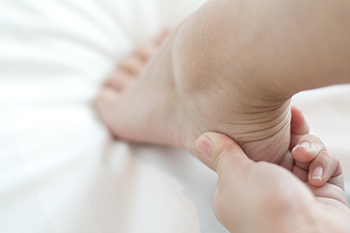Diagnosing Sever’s Disease

Sever's disease is a common cause of heel pain in growing children and adolescents, particularly those who are physically active. It occurs when the growth plate at the back of the heel, known as the calcaneal apophysis, becomes inflamed. This inflammation is typically caused by repetitive stress or microtrauma due to athletic activities combined with the heel's growth spurt. Symptoms include pain at the back of the heel, which may worsen with activity, and relief with rest. This affliction is diagnosed primarily through clinical evaluation. A chiropodist will consider a child's history and symptoms and conduct a physical examination. During the exam, they may squeeze the sides of the heel, which typically produces pain in a child with Sever's disease. While X-rays are not used to diagnose the condition itself, they may be ordered to rule out other causes of heel pain, such as fractures. If your child complains of heel pain, it is suggested that you make an appointment with a chiropodist for a proper diagnosis and treatment options.
Sever’s disease typically affects young children and teenagers. If your child complains of foot pain, please consult with one of the chiropodists from The Footcare Centre. Our chiropodists will assess your condition and provide you with quality foot and ankle treatment.
What Is Sever’s Disease?
Sever’s disease, also known as calcaneal apophysitis, is an inflammation of the growth plate in the heel bone. It is typically caused by overuse due to repetitive activities such as running, jumping, and playing certain sports. This condition most frequently affects children between the ages of 8 and 14.
Symptoms
Symptoms of Sever’s disease include:
Pain in the back or bottom of the heel
Pain when the sides of the heel are squeezed
Limping or walking on tiptoes to avoid putting pressure on the heel
Difficulty running, jumping, or participating in usual activities
Fatigue
Diagnosis
Sever’s disease is diagnosed by taking a thorough medical history and performing a physical examination. Imaging studies, such as an X-ray, can help rule out other injuries like a fracture.
Treatment
Sever’s disease typically heals without any long-term complications. Treatment involves resting the affected foot by reducing typical activities, wearing orthotics to support the foot, immobilizing the affected foot, taking medications to reduce pain and inflammation, and stretching the foot.
If you have any questions, please feel free to contact our office located in . We offer the newest diagnostic and treatment technologies for all your foot care needs.
